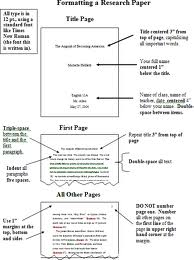Module 10: The Survey
Posted By: Vivian D. Peremacio
Sources:1. http://en.wikipedia.org/wiki/Survey
Posted By: Vivian D. Peremacio
Sources:1. http://en.wikipedia.org/wiki/Survey
2. http://www.google.com.ph/images?hl=tl&biw=1024&bih=580&gbv=2&tbm=isch&
sa=1&q=survey&aq=f&aqi=&aql=&oq=
____________________________
Survey
may refer to:
Quantitative research
- Statistical survey, a method for collecting quantitative information about items in a population
- Paid survey, a method for companies to collect consumer opinions about a product by offering them money as rewards
Geography
- Surveying, the technique and science of measuring positions and distances on Earth
- Aerial survey, a method of collecting information using aerial photography
- Cadastral survey, used to document land ownership, by the production of documents, diagrams, plats, and maps
- Dominion Land Survey, the method used to divide most of Western Canada into one-square-mile sections for agricultural and other purposes
- Public Land Survey System, a method used in the United States to survey and identify land parcels
- Survey township, a square unit of land, six miles (~9.7 km) on a side, used by the U.S. Public Land Survey System
Earth Sciences
- Geological survey, an investigation of the subsurface of the ground to create a geological map or model
- Geophysical survey, the systematic collection of geophysical data for spatial studies
- Soil survey, the mapping of the properties and varieties of soil in a given area
- Hydrographic survey, the gathering of information about navigable waters for the purposes of safe navigation of vessels
- Cave survey, the three-dimensional mapping of underground caverns; the resulting map is also referred to as a survey
Construction and Mining
- Construction surveying Locating of structures relative to a reference line, used in the construction of buildings, roads, mines and tunnels
- Deviation survey, used in the oil industry to measure a borehole's departure from the vertical
Archaeology
- Archaeological field survey, the collection of information by archaeologists prior to excavation
Astronomy
- Astronomical survey, imaging or mapping regions of the sky
- Durchmusterung, a German word for a systematic survey of objects or data, generally used in astronomy
- Redshift survey, an astronomical survey of a section of the sky to calculate the distance of objects from Earth
Academia
- Survey article, a scholarly publication to summarize an area of research
Organizations
- The Institut Géographique National, a French state establishment which produces and maintains geographical information for France and its territories
- The Survey of India, India's central agency in charge of mapping and surveying
- The Zoological Survey of India studies the fauna of India
- The British Geological Survey, a body which carries out geological survey and monitoring of the UK landmass
- The Ordinance Survey, national mapping agency for Great Britain
- The British Antarctic Survey, conducts scientific research in and around Antarctica for the United Kingdom
- The United States Geological Survey, government scientific research agency which studies the landscape of the United States
- The U.S. National Geodetic Survey, performs geographic surveys as part of the U.S. Department of Commerce
Confirmation of Learning:
Conduct a survey on TV Ratings of Kapamilya vs. Kapuso.....
















